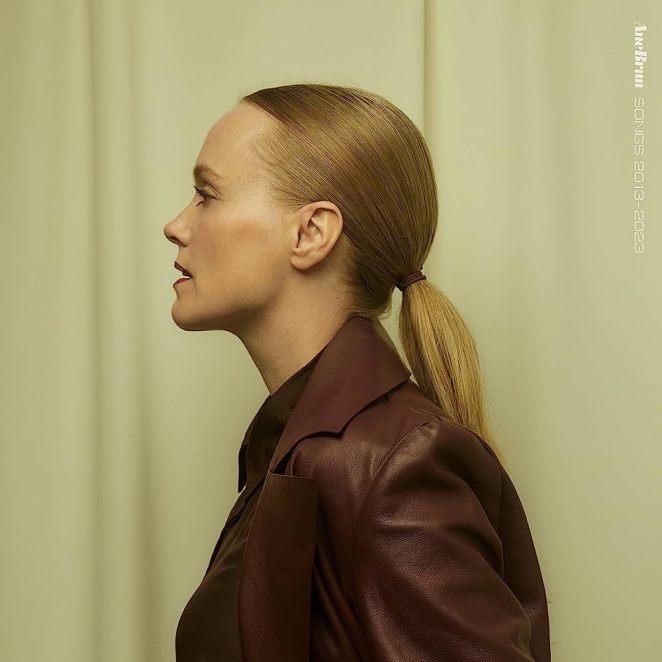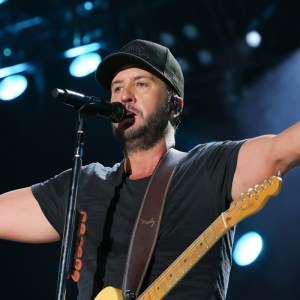It’s May 17, the Fourth of July of Norway, and Ane Brun is home in Oslo, grateful for a little respite. Along with celebrating the national day in her country, where she returned during the pandemic after settling in Stockholm, Sweden, for more than two decades, Brun is also commemorating another milestone: the past 20 years of her career.
Videos by American Songwriter
Instead of reminiscing on songs from her 2003 debut, Spending Time with Morgan, or 2008 breakthrough, Changing of the Seasons, and more within her lengthy catalog, Brun centered on the second decade of her career with Songs 2013-2023. The 16-track compilation of tracks pulled from When I’m Free in 2015, 2017 release Leave My Breathless, and After The Great Storm and How Beauty Holds The Hand Of Sorrow, both released in 2020, in addition to one new track “Hand In The Fire.”
Brun wanted to chronicle the past decade since it was one filled with so much change, loss, and immense growth for the singer/songwriter.
“These 10 years have been filled with so much, from loss and sorrow to love and security, both sides of life’s spectrum,” said Brun in a previous statement. “I think the passing of my father was one of those massive life changes that we go through, and of course there’s the two years of the pandemic, which ended up with me moving to Oslo after two decades in Sweden.”
She continued, “But I’ve gone through personal processes that have made me more confident, braver, healthier, calmer and also happier. My life has become a lot better in many ways.”
Also paying homage to some of the songs she’s covered throughout her career, Portrayals features Brun’s majestical renditions of Beyoncé‘s “Halo,” Cyndi Lauper‘s “True Colors,” “Into My Arms” by Nick Cave, and Alphaville’s “Big in Japan,” among others.
Brun spoke to American Songwriter on life back in Norway, her songs in retrospect, over the past 10 and 20 years, and the elements she finally began recognizing in her songwriting now.
American Songwriter: It’s amazing how two decades can pass. How have the past 10 or 20 years come back into focus for you now?
AB: It feels like a very long time ago, that first album. Many people think that 20 years goes by fast. I feel like it’s a very long time. So much happens. It’s so much dense time. I did a morning TV show in Sweden the other day, and they showed me this clip from the first time I was there on the show in 2002, 2003. I just looked at myself and thought, “Wow, I was so young.” All the things that’s happened after. It was quite interesting to see. With my first album, I was pretty new to everything. I taught myself to play after I turned 20 and started playing music in my early 20s, and then the first record came out when I was 27.
It’s almost like the whole first five to 10 years was like school, almost like an education, because I also started my label in 2003. I didn’t really know much about the business, and I was quite protective about my space and my music. Since I didn’t know much, I just tried to trust what I knew, which was that I loved the music and the space where I played music and I didn’t let so many people in during the first part. As I’ve grown older and more safe, I’ve opened up my music as well. It’s been my personal development, and music has been parallel. Today, I feel very open to everything, even when it comes to the actual work around the music. Things like interviews, I was quite terrified about in the beginning. Now, in the last 10 years, it’s fun. It’s part of the job. I enjoy it. It’s been a real journey.
AS: You moved back to Oslo after 20 years in Sweden during the pandemic. How has this transition, and being “back home” been for you since?
AB: It’s definitely a transition. I think that all my grown-up formative years have been in Sweden, so it’s a bit like coming home, but not really. It’s a mix. I still have a studio in Stockholm, and I go back and forth a lot. I still work out of Stockholm with my musicians, and my label is there. I’m trying to keep it that way for a while.
AS: How did Songs 2013-2023 and Portrayals start piecing together for you from your 2020 releases?
AB: It was my way of celebrating the things that I’ve done, and to see if I can present a portion of my work to a new audience as well. I’ve got so much music out there, so it’s kind of a package. It’s almost like playlists in a way. I was trying to mark the occasion and also see if it could be presented to someone new as well, and since I have my own label I can decide what to do.
AS: You’ve timestamped this era of your career, in a way.
AB: Yes, it is timestamped. It’s nice to see people can rediscover stuff — and also for me to rediscover it. I’ve been listening to the old albums and going through it all. It’s interesting because I never listen to my music. When you finish an album, you release it. It’s done, and you start playing live, and you move forward to the next project.

AS: At some point, you’ve had to also let go of the songs you released within the past decade and the covers. Do many of these still resonate with you?
AB: It’s a lot about transitioning in life, trying to understand why I feel I need to move on from something, and how to move on from something, and avoiding making fear stop me from doing what I want. There’s freedom and feeling free in your life.
There’s also a lot of nature imagery. Growing up, we had these music history lessons, and they talked about Grieg [19th-century composer Edvard Hagerup Grieg] from Norway, who was so influenced by nature. I never really got it, because it was just instrumental music. Now that I look back at my music, I can see that I write a lot of lyrics around nature when I try to express my emotions. I used the ocean. I used the wind. I used water, mountains. It’s where I come from, which is quite rough weather.
It’s cool to look back and see where I’ve found my words. I can see it in my lyrics, how I express my feelings. Many times it’s through the physical, through physics, how the wind feels on my skin or how the water moves… If I was from the desert, maybe I would talk more about the sun, the sun —and palm trees. (Laughs) I haven’t written anything about palm trees.
AS: Do you feel like you’re the same songwriter from Spending Time With Morgan? How has songwriting shifted for you over the years?
AB: In some old songs, I can see that there’s the same craft in a way, but that was before I even knew I had a craft. It was when I desperately needed to make music when I was young. Today when I do it, I write music more as a craftsman. I know how to go about and I also try to move away from my usual paths, because it’s easy to do the same thing you always did. I try to trick myself by making music with new tools, or not falling into the same rhythmic patterns, the same harmonics, and explore more.
I can look at some songs from my first album and say “That’s typical me. This is how I write,” but now, there’s much more experience and more knowledge about how to get to the end.
AS: What else do you feel like you’ve learned over the past 20 years?
AB: In the early days, I wish I had a more playful feeling around it. It was very serious in the beginning. The first three years I was very serious about the music like I found this treasure in the music. I went up on stage and I was very, very serious. I still feel music is serious, but I’m having fun now. I’m going on stage, and I open up to the audience, and I play around and dance. I dare to be the entertainer. I didn’t dare do that at the time. I was very much in my space, singing and being in it, which I think is why it worked, and why I actually got to be where I am today — because that was my focus. I’ve learned to have fun with my work and enjoy it, and I think that life showed me that path.
I also learned that you can make mistakes. You can make shitty songs. You can sketch a very bad demo and just decide that no one’s going to hear it. And that’s ok. That’s also part of it.
AS: Now that you’ve looked back, where are you going in the future? What will you gravitate towards next?
AB: I’m in this retrospective [space] right now, but in my head, I’m in the future. I really want to make more music. I want to record more music.
The song “Hand in the Fire” [on Songs 2013-2023] is a starting point of my next project, in a way. I want to just continue making an album where I explore that world.
Photo: Julia Marie Naglestad / Courtesy of Sacks & Co.
